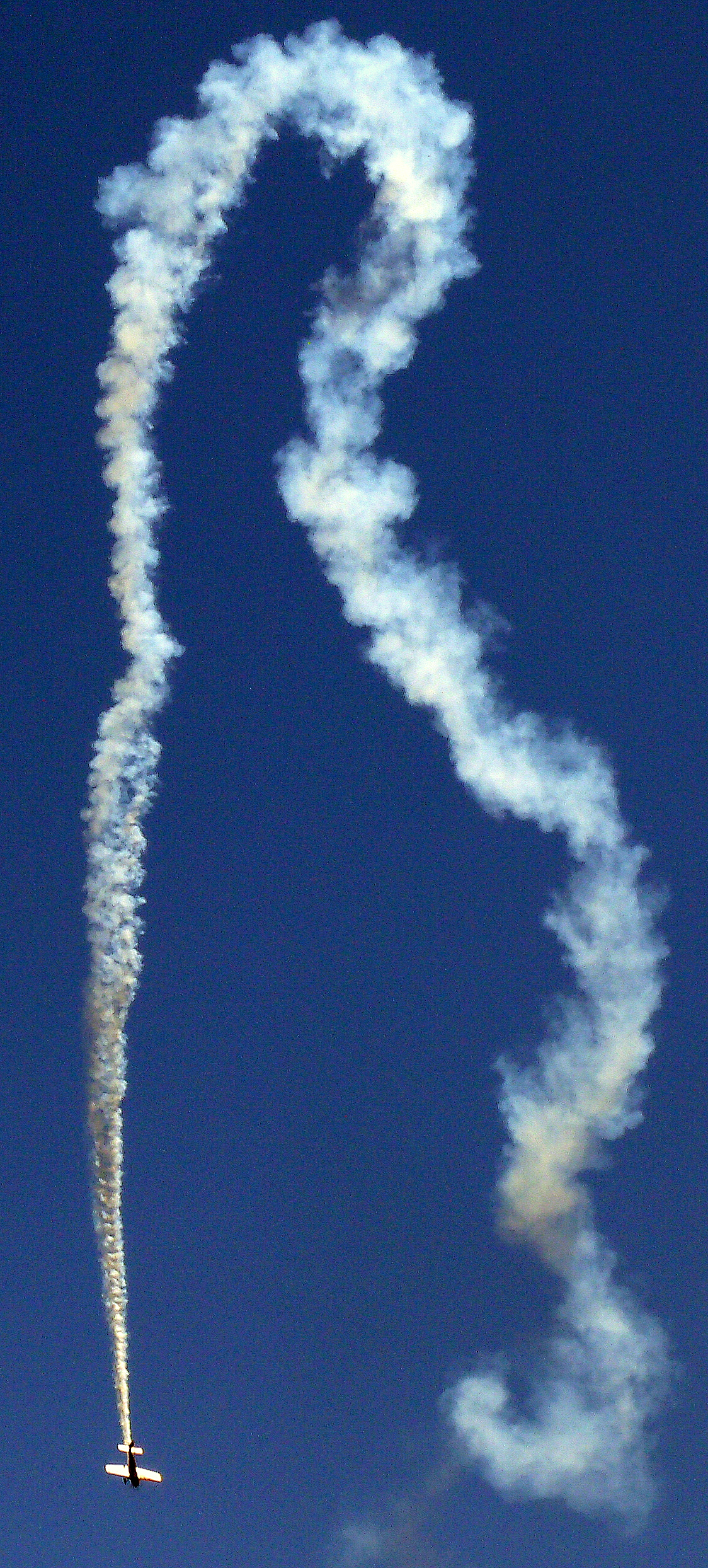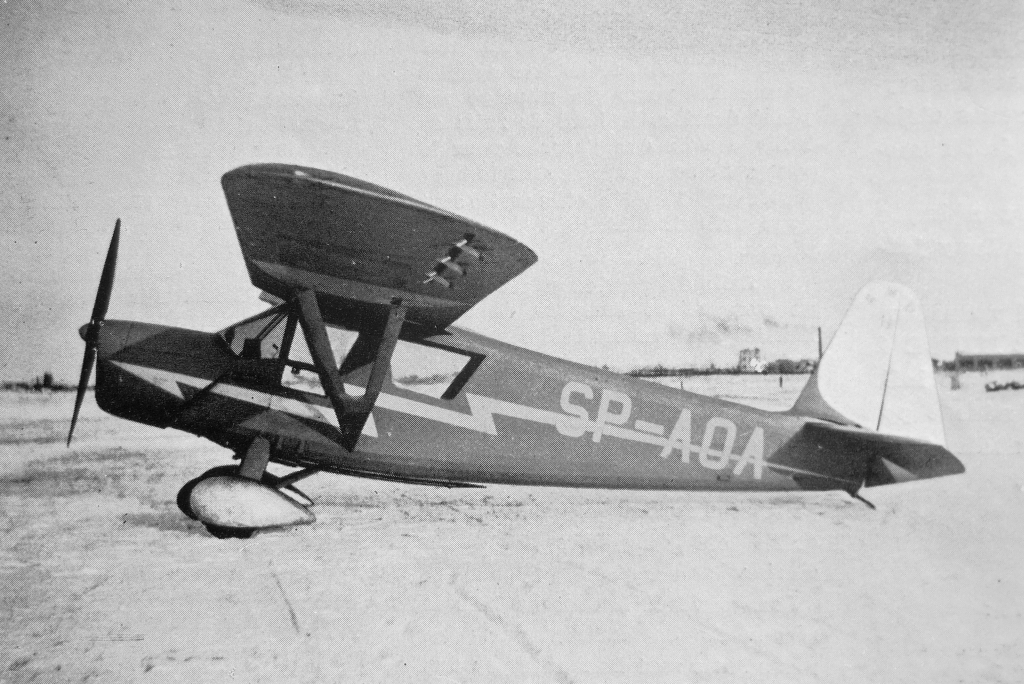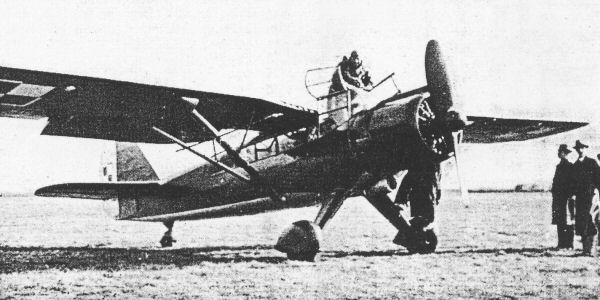|
Doświadczalne Warsztaty Lotnicze
Doświadczalne Warsztaty Lotnicze (DWL) (''Experimental Aeronautical Workshops'') was the Polish aircraft manufacturer, active in 1933-1939. It was a home of the RWD construction team and manufactured aircraft under a brand RWD. History The RWD construction team was organized of students of Warsaw University of Technology around 1928. They built their first designs in workshops of the Aviation Section of Students' Mechanical Club, in University buildings. In 1930 the workshops moved to new buildings near Okęcie airport in Warsaw, founded by the LOPP organization. In March 1933 the workshops separated from the Aviation Section and the University, and there was created a company ''Doświadczalne Warsztaty Lotnicze'' to manufacture RWD aircraft. Main designers were Stanisław Rogalski and Jerzy Drzewiecki of the RWD team, other designers were Bronisław Żurakowski, Tadeusz Chylinski, Leszek Dulęba and Andrzej Anczutin and several engineers, including Henry Millicer. A comp ... [...More Info...] [...Related Items...] OR: [Wikipedia] [Google] [Baidu] |
Aerospace
Aerospace is a term used to collectively refer to the atmosphere and outer space. Aerospace activity is very diverse, with a multitude of commercial, industrial and military applications. Aerospace engineering consists of aeronautics and astronautics. Aerospace organizations research, design, manufacture, operate, or maintain both aircraft and spacecraft. The beginning of space and the ending of the air is considered as 100 km (62 mi) above the ground according to the physical explanation that the air pressure is too low for a lifting body to generate meaningful lift force without exceeding orbital velocity. Overview In most industrial countries, the aerospace industry is a cooperation of the public and private sectors. For example, several states have a civilian space program funded by the government, such as NASA, National Aeronautics and Space Administration in the United States, European Space Agency in Europe, the Canadian Space Agency in Canada, Indian Space Re ... [...More Info...] [...Related Items...] OR: [Wikipedia] [Google] [Baidu] |
RWD-9
The RWD 9 was a Polish sports plane of 1934, constructed by the RWD (aircraft manufacturer), RWD team. Development The aircraft was a further development of the RWD 6 - the winner of the ''IIIrd Challenge de Tourisme International'' Challenge 1932 international tourist aircraft contest. The RWD-9 was designed specially for the purpose of competing in the ''IVth Challenge de Tourisme International'' to be held in Warsaw during August–September 1934 . It was constructed by Stanisław Rogalski and Jerzy Drzewiecki of the RWD team in the DWL workshops in Warsaw. To meet new contest regulations, the new plane was designed as four-seater, with increased mass and engine power and yet better STOL capabilities. The first prototype was completed in October 1933, with a 265 hp Menasco inline engine (aviation), inline engine, and first flew on December 4, 1933. In January 1934 it was fitted with Czech Walter Aircraft Engines, Walter Bora radial engine (220 hp), and in spring 1934 w ... [...More Info...] [...Related Items...] OR: [Wikipedia] [Google] [Baidu] |
RWD 10
The RWD-10 was a Polish aerobatics sports plane, single-seat parasol wing monoplane, used from 1933 to 1939 and constructed by the RWD team. Development The aircraft was designed as a single-seater aerobatic sports plane that could also be used as a trainer for fighter pilots. Its chief designer was Jerzy Drzewiecki of the RWD design team at the DWL (''Doświadczalne Warsztaty Lotnicze'') aircraft factory. Its silhouette was similar to the RWD-8. The first prototype (registration SP-ALC), was flown in July 1933 by Drzewiecki. Its stability was not satisfactory, but after modifications, including lengthening of the fuselage, it turned out to be a successful design, completing state trials in 1935. In a mock dogfight with the PZL P.11c fighter, the RWD-10 kept on the P.11's tail. The first public aerobatics show of the RWD-10 took place during the Gordon Bennett Cup in ballooning on September 14–15, 1935 in Warsaw. In 1936, the LOPP paramilitary organization ordered 20 aircraft ... [...More Info...] [...Related Items...] OR: [Wikipedia] [Google] [Baidu] |
RWD-5
The RWD 5 was a Polish touring and sports plane of 1931, a two-seat high-wing monoplane, constructed by the RWD team. It was made famous by its transatlantic flight, being the smallest aircraft to cross the Atlantic. Development The RWD 5 was constructed by the RWD team of Stanisław Rogalski, Stanisław Wigura and Jerzy Drzewiecki (their designs were named RWD after their initial letters). It was a further development of earlier RWD aircraft series (RWD 1, RWD 2, RWD 3 and RWD 7), especially of its direct predecessor, the RWD 4. It shared the same wing shape and construction, while the fuselage was totally new, constructed of steel frame, unlike its wooden predecessors. The fuselage had a modern shape and a closed canopy with panoramic windows (earlier models had atypical fish-shaped fuselages with no direct forward view from the pilot's seat). The first prototype (registration SP-AGJ) was flown on 7 August 1931 by its designer Jerzy Drzewiecki. It was built in new worksho ... [...More Info...] [...Related Items...] OR: [Wikipedia] [Google] [Baidu] |
Walter Major 4 A RWD 13
Walter may refer to: People * Walter (name), both a surname and a given name * Little Walter, American blues harmonica player Marion Walter Jacobs (1930–1968) * Gunther (wrestler), Austrian professional wrestler and trainer Walter Hahn (born 1987), who previously wrestled as "Walter" * Walter, standard author abbreviation for Thomas Walter (botanist) ( – 1789) Companies * American Chocolate, later called Walter, an American automobile manufactured from 1902 to 1906 * Walter Energy, a metallurgical coal producer for the global steel industry * Walter Aircraft Engines, Czech manufacturer of aero-engines Films and television * ''Walter'' (1982 film), a British television drama film * Walter Vetrivel, a 1993 Tamil crime drama film * ''Walter'' (2014 film), a British television crime drama * ''Walter'' (2015 film), an American comedy-drama film * ''Walter'' (2020 film), an Indian crime drama film * ''W*A*L*T*E*R'', a 1984 pilot for a spin-off of the TV series ''M*A*S*H'' * ... [...More Info...] [...Related Items...] OR: [Wikipedia] [Google] [Baidu] |
World War II
World War II or the Second World War, often abbreviated as WWII or WW2, was a world war that lasted from 1939 to 1945. It involved the vast majority of the world's countries—including all of the great powers—forming two opposing military alliances: the Allies and the Axis powers. World War II was a total war that directly involved more than 100 million personnel from more than 30 countries. The major participants in the war threw their entire economic, industrial, and scientific capabilities behind the war effort, blurring the distinction between civilian and military resources. Aircraft played a major role in the conflict, enabling the strategic bombing of population centres and deploying the only two nuclear weapons ever used in war. World War II was by far the deadliest conflict in human history; it resulted in 70 to 85 million fatalities, mostly among civilians. Tens of millions died due to genocides (including the Holocaust), starvation, ma ... [...More Info...] [...Related Items...] OR: [Wikipedia] [Google] [Baidu] |
RWD-21
The RWD 16bis and RWD 21 were Polish two-seat low-wing touring and sports planes of the late 1930s, constructed by the RWD bureau, sharing the same construction, main difference of the RWD 21 being a stronger engine. Development The RWD 16bis was designed in 1938 by Andrzej Anczutin of the RWD bureau as a light and economical touring and sports plane, utilizing the experience from an unsuccessful earlier design RWD 16. In spite of the designation, the RWD 16bis design was new, only partly basing on the RWD 16 construction. On contrary, it appeared a successful design, with good handling and performance and ease of flying. It was a wooden low-wing monoplane, with two seats side-by-side in a closed cockpit. The first prototype was built and first flown in June–July 1938 (registration SP-BNM) followed by the second prototype (SP-BPC). Both were powered by a Polish-designed 63 hp Avia 3 straight engine. In series, a 62 hp Walter Mikron II straight engine was expected. ... [...More Info...] [...Related Items...] OR: [Wikipedia] [Google] [Baidu] |
RWD-17
The RWD 17 was a Polish aerobatics-trainer aircraft of 1937, parasol wing monoplane, constructed by the RWD team. Development The aircraft was designed for an order of the LOPP paramilitary organization, as an interim trainer aircraft between primary trainer RWD 8 and single-seater aircraft, demanding higher skills, like the RWD 10. It was also fitted to aerobatics. The construction of the new aircraft was very similar to the RWD 8, but almost all parts were newly designed. Main visual difference were twin struts supporting wings, instead of V-struts, and two-part wing instead of three-part, without central section. The works started in 1936, and the main designer was Bronisław Żurakowski of the RWD bureau. The first prototype (registration SP-BMX) was flown in August 1937 in Warsaw. After state trials in 1937, it was accepted for production, and in 1938 a short series of RWD 17 was produced (23 serial RWD 17 were in the Polish registry). In early 1938, a floatplane variant R ... [...More Info...] [...Related Items...] OR: [Wikipedia] [Google] [Baidu] |
Aerobatic
Aerobatics is the practice of flying maneuvers involving aircraft attitudes that are not used in conventional passenger-carrying flights. The term is a portmanteau of "aerial" and "acrobatics". Aerobatics are performed in aeroplanes and gliders for training, recreation, entertainment, and sport. Additionally, some helicopters, such as the MBB Bo 105, are capable of limited aerobatic manoeuvres. An example of a fully aerobatic helicopter, capable of performing loops and rolls, is the Westland Lynx. Most aerobatic manoeuvres involve rotation of the aircraft about its longitudinal (roll) axis or lateral (pitch) axis. Other maneuvers, such as a spin, displace the aircraft about its vertical (yaw) axis. Manoeuvres are often combined to form a complete aerobatic sequence for entertainment or competition. Aerobatic flying requires a broader set of piloting skills and exposes the aircraft to greater structural stress than for normal flight. In some countries, the pilot must wear a ... [...More Info...] [...Related Items...] OR: [Wikipedia] [Google] [Baidu] |
RWD-10
The RWD-10 was a Polish aerobatics sports plane, single-seat parasol wing monoplane, used from 1933 to 1939 and constructed by the RWD team. Development The aircraft was designed as a single-seater aerobatic sports plane that could also be used as a trainer for fighter pilots. Its chief designer was Jerzy Drzewiecki of the RWD design team at the DWL (''Doświadczalne Warsztaty Lotnicze'') aircraft factory. Its silhouette was similar to the RWD-8. The first prototype (registration SP-ALC), was flown in July 1933 by Drzewiecki. Its stability was not satisfactory, but after modifications, including lengthening of the fuselage, it turned out to be a successful design, completing state trials in 1935. In a mock dogfight with the PZL P.11c fighter, the RWD-10 kept on the P.11's tail. The first public aerobatics show of the RWD-10 took place during the Gordon Bennett Cup in ballooning on September 14–15, 1935 in Warsaw. In 1936, the LOPP paramilitary organization ordered 20 aircraft ... [...More Info...] [...Related Items...] OR: [Wikipedia] [Google] [Baidu] |
RWD-13
The RWD 13 was a Polish touring plane of 1935, three-seater high-wing monoplane, designed by the RWD team. It was the biggest commercial success of the RWD. Development The RWD 13 was a touring plane, developed from a line of sports planes RWD 6 (a winner of Challenge 1932 international touring aircraft contest) and RWD 9 (a winner of Challenge 1934). It was designed by Stanisław Rogalski and Jerzy Drzewiecki of the RWD team, in the DWL workshops (''Doświadczalne Warsztaty Lotnicze'') in Warsaw, for and order of the LOPP paramilitary organization. The prototype was constructed using parts of a broken up RWD 6 (initially it was even supposed to be designated RWD 6bis), but its construction was more similar to newer RWD 9. It first flew on 15 January 1935 (registration SP-AOA). Since the RWD 13 was not supposed to be a competition aircraft, the main differences from the RWD 9 were: an inline engine with lower power output, instead of a radial engine, and simpler wing mechani ... [...More Info...] [...Related Items...] OR: [Wikipedia] [Google] [Baidu] |
LWS (aircraft Manufacturer)
LWS - ''Lubelska Wytwórnia Samolotów'' (''Lublin Aircraft Factory'') was a Polish aerospace manufacturer, located in Lublin, created in 1936 from Plage i Laśkiewicz works and produced aircraft between 1936 and 1939. History The LWS was created out of the nationalized Plage i Laśkiewicz works, the first Polish aircraft manufacturer. Due to plans of the Polish military aviation authorities, headed by Ludomił Rayski, to gather all aviation industry in state hands, Plage & Laśkiewicz works were forced to go Bankruptcy, bankrupt in late 1935 in aviation, 1935. Then, they were nationalization, nationalized under the name LWS in February 1936 in aviation, 1936. While formally it was owned by the PWS (aircraft manufacturer), PWS state aircraft manufacturer, in fact it was subordinated to the PZL. A director was Maj. Aleksander Sipowicz, a technical director and the main designer was initially Zbysław Ciołkosz; from autumn 1937 the technical director was Ryszard Bartel and the main ... [...More Info...] [...Related Items...] OR: [Wikipedia] [Google] [Baidu] |








